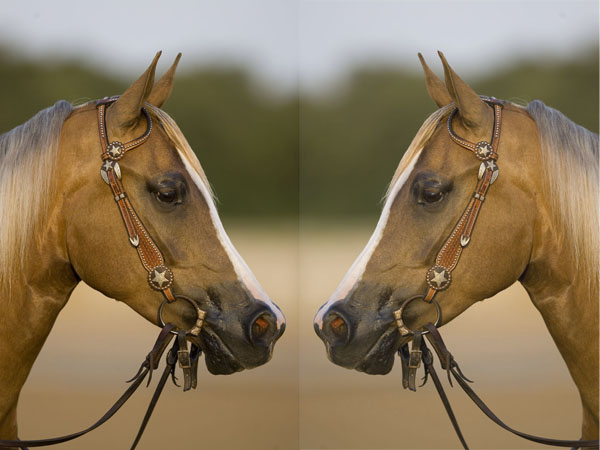
Merely watching a highly skilled rider can help you absorb some of that expertise yourself, according to what many scientists claim about so-called “mirror neurons” in the brain.
That means the time you spend watching the best goes between your classes at a horse show is more than just fun; it’s also beneficial—especially if you do it the right way.
I’m going to share how to do that.
[GAIN COURAGE in the saddle with this proven strategy.]
Mirror neurons are specialized brain cells that fire not only when we execute an action, but also when we simply watch someone else executing the action.
The effect was first documented over 20 years ago. Italian researchers monitoring monkeys’ brains discovered that certain neurons fired not only when the monkeys reached for a peanut, but also when they just watched someone else—another monkey or a human—reach for a peanut.
‘Aha’ Insights
When I first learned about mirror neurons in 2005, it sparked an “aha!” moment for me. So that’s how he did it, I thought, remembering something the late Greg Ward, master horseman and four-time winner of the National Reined Cow Horse Association Snaffle Bit Futurity, once told me.
“Every time I come home from a horse show, I ride better for a while,” he said, referring to his penchant for studying riders whose technique he admired. “You have to watch everything—their feet, their hands, their facial expressions—and experience their performance from their perspective.”
Turns out Ward was taking full advantage of his brain’s ability to engage in this form of “stealth learning.” And, because he already knew a thing or two about riding cow horses, he was getting the most benefit possible out of his mirror neurons when he watched someone ride a pattern or go down the fence.
That’s because, say scientists, we need to know something about the activity we’re viewing in order for our brains to experience it in the most meaningful way.
How to Watch-‘N-Learn
So, how can you use stealth learning to your own advantage? Some tips:
• Watch what you know. If you’re a pretty good barrel racer but brand new to reining, you’ll benefit more by watching great barrel racers than great reiners. That’s because you need a basic “motor map” in your brain to give the new learning something to lock onto.
Research has found, for example, that ballet dancers showed a lot of activity in the part of their brains that control dancing when they watched ballet dancers perform, but not so much when they watched Brazilian capoeira dancers perform, and vice versa.
• Experience what you watch. Remember Greg Ward’s words. He got the most benefit from watching by imagining himself in the saddle, experiencing the performance from the rider’s perspective.
So engage as many senses as possible—feel your hands and legs giving the cues, hear the horse’s footfalls under you, smell his sweat. Make the experience come alive.
[MORE out-of-the-box training tips from cow horse great Greg Ward.]
• Watch the real thing, if possible. Live performances are best at triggering all your senses. Spectating at events, watching clinic presentations by top trainers, observing advanced riders in their practice or lessons—all these provide maximum stealth-learning power.
Studying DVDs, though not as impactful as live performances, still provides benefit if you strive to fully experience the ride as much as possible.
• Don’t quit your lessons. Watching can’t substitute for actual instruction. The ideal, if you want to advance most rapidly, is great coaching augmented with frequent mental “ride alongs” as you watch—and your brain “mirrors”—the very best horsemen in your sport or activity.






